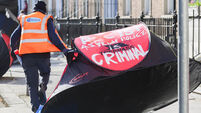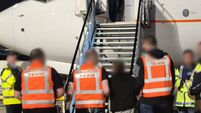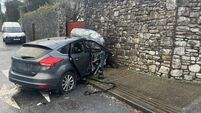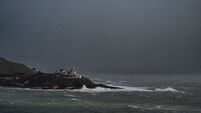Seán Heuston, a youthful face of the Easter Rising

Born in 1891, Seán Heuston was baptised John Joseph, and to his family he was always ‘Jack’. Like many young nationalists of his generation, he adopted the Irish version of his name, which is how he is remembered. And Heuston was young; the second youngest, after Edward (Ned) Daly, of those executed for their involvement in the Easter Rising.
A child of the Dublin tenements, he came from one of the humblest backgrounds of any of the 1916 leaders, and as late as 1911 his family still lived in the inner-city tenements (though his father was absent, having emigrated to London).
It is tempting to speculate on whether or not this background would have shaped his attitudes on economic and social issues, but we have no way of knowing whether it did.
On the other hand, there can be little doubt about his politics. Heuston, like many Dubliners who fought in the Easter Rising, was a graduate of the Christian Brothers O’Connell Schools, and in 1907 became a clerk in the Great Southern and Western Railway (GSWR).
He was stationed in the Limerick depot, and while in Limerick he moved into the circles of ‘advanced’ nationalism. He joined the Irish Republican Brotherhood (IRB) and the republican boy-scout movement Na Fianna Éireann, the organisation with which he was most closely identified.
For a young man from Dublin, Na Fianna may have offered an outlet and camaraderie in Limerick; for a young man from a tenement, its focus on fieldcraft and the outdoors may have had an additional appeal.
The organisation was one of the earliest openly militant groups in 20th-century Ireland; as the republican paper Irish Freedom declared in 1913, Na Fianna was intended “not merely to make the boys of Ireland first-class scouts, but to make them first-class Irish nationalists”.
Heuston rose through the ranks and joined the Irish Volunteers after his return to Dublin in 1913 to work at the GSWR depot at Kingsbridge (later renamed Heuston Station after him). Recalled by many as dapper and serious in intent, albeit with a good sense of humour, Heuston was the main breadwinner for his family, who now lived on Fontenoy St near Phibsborough.
His republican activities were focused on this area of the city; he was in charge of a company of the Dublin Brigade of the Volunteers based on Blackhall Place, and on one occasion brazenly stole a rifle from the platform of Broadstone Station (literally around the corner from his home) after a troop train had pulled in.
Heuston had acquired a reputation for getting things done; and he seems to have been privy to at least some of the machinations that were the prelude to the Easter Rising.
Having been involved in ferrying weapons around Stoneybatter, he nearly pulled a gun on Éamon de Valera in a heated dispute over Eoin MacNeill’s countermanding order but when the Rising broke out on April 24, James Connolly ordered Heuston and 14 others to seize the Mendicity Institution on Ushers Island.
This was a charity providing meals for Dublin’s poor (some of whom were driven out of the building when the Volunteers seized it; a fact that later embarrassed some of the Volunteers involved). It was located in an old aristocratic townhouse beside the Georgian house immortalised as the setting for James Joyce’s story ‘The Dead’.
Given that it was on the south quays, Heuston had been told to seize it to ambush troops moving down the quays from the Royal Barracks (now Collins Barracks), to buy time for other members of the Volunteers to secure positions in and around the Four Courts. In doing so, Heuston’s small band killed the first ‘British’ casualty of the Rising: Gerald Neilan of the Royal Dublin Fusiliers, who had been born in Rathmines and whose brother Arthur was fighting with the Irish Volunteers around the Four Courts.
After an initial burst of fighting on April 24, Heuston and his men contemplated returning home as they thought the Rising had collapsed. But having been told by Connolly to seize the Mendicity Institution for no more than a few hours, Heuston decided to remain there for three days.
His small garrison was left alone by the British until it was decided to clear it out of the building on Wednesday, which brought Heuston’s Rising to an end. He was detained in Arbour Hill before being tried by court martial in Richmond Barracks. He was the only one of the men executed after the Rising to be found with an incriminating document — an order signed by Connolly.
Heuston defended himself on the grounds Connolly had used the Scottish spelling ‘Houston’ and therefore referred to somebody else. This cut no ice with his captors, and he was shot by firing squad in Kilmainham on May 8, 1916. In death, he became one of the youthful faces of the Easter Rising.















